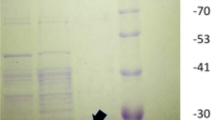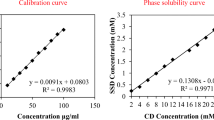Abstract
Methicillin-resistant Staphylococcus aureus (MRSA) is considered a common colonizer of burn wound and accounts for high morbidity and mortality all across the globe. Systemic antibiotic therapy which is generally prescribed for these patients has a number of limitations. These include high drug dose, toxicity, and chances of development of drug resistance. However, local delivery of drug not only addresses these limitations but also provides better efficacy at the site of infection. In the present study, hydrogel preparations were developed for the topical delivery of moxifloxacin for the treatment of S. aureus–infected burn wound. Moxifloxacin was characterized by UV, FTIR, DSC, hot-stage microscopy, NMR, and HPLC and loaded into conventional and Boswellia-containing novel gels. Gels were characterized by visual examination, pH, UV spectroscopy, and release assays. In vivo studies showed that both gels were effective in eradicating the bacteria completely from the wound site when treatment was started during the early stage of infection. On the contrary, delayed treatment of planktonic and biofilm cells with novel gel showed better efficacy as compared with conventional gel in S. aureus–infected burn wound. Histopathological analysis also showed better skin healing efficacy of novel gel than conventional gel. Our results show that moxifloxacin can be efficiently used topically in the management of burn wound infections along with other antibacterial agents. Since biofilm-mediated infections are on the rise especially in chronic bacterial disease, therefore, a preparation containing antibiofilm agent-like Boswellia as one of the excipients would be more meaningful.














Similar content being viewed by others
References
Paudel KS, Milewski M, Swadley CL, Brogden NK, Ghosh P, Stinchcomb AL. Challenges and opportunities in dermal/transdermal delivery. Ther Deliv. 2010;1(1):109–31.
Vashist A, Vashist A, Gupta YK, Ahmad S. Recent advances in hydrogel based drug delivery systems for the human body. J Mater Chem B. 2014;2(2):147–66.
Penesyan A, Gillings M, Paulsen I. Antibiotic discovery: combatting bacterial resistance in cells and in biofilm communities. Molecules. 2015;20(4):5286–98.
Alhede M, Kragh KN, Qvortrup K, Allesen-Holm M, van Gennip M, Christensen LD, et al. Phenotypes of non-attached Pseudomonas aeruginosa aggregates resemble surface attached biofilm. PLoS One. 2011;6(11):e27943.
Macia MD, Rojo-Molinero E, Oliver A. Antimicrobial susceptibility testing in biofilm-growing bacteria. Clin Microbiol Infect. 2014;20(10):981–90.
Pond SM, Tozer TN. First-pass elimination basic concepts and clinical consequences. Clin Pharmacokinet. 1984;9(1):1–25.
Miller D. Review of moxifloxacin hydrochloride ophthalmic solution in the treatment of bacterial eye infections. Clin Ophthalmol (Auckland, NZ). 2008;2(1):77.
Chilet-Rosell E, Ruiz-Cantero MT, Pardo MA. Gender analysis of moxifloxacin clinical trials. J Women's Health. 2014;23(1):77–104.
Church D, Elsayed S, Reid O, Winston B, Lindsay R. Burn wound infections. Clin Microbiol Rev. 2006;19(2):403–34.
Park HY, Kim CR, Huh IS, Jung MY, Seo EY, Park JH, et al. Staphylococcus aureus colonization in acute and chronic skin lesions of patients with atopic dermatitis. Ann Dermatol. 2013;25(4):410–6.
Tong SY, Davis JS, Eichenberger E, Holland TL, Fowler VG. Staphylococcus aureus infections: epidemiology, pathophysiology, clinical manifestations, and management. Clin Microbiol Rev. 2015;28(3):603–61.
Tarai B, Das P, Kumar D. Recurrent challenges for clinicians: emergence of methicillin-resistant Staphylococcus aureus, vancomycin resistance, and current treatment options. J Lab Phys. 2013;5(2):71–8.
Branski LK, Al-Mousawi A, Rivero H, Jeschke MG, Sanford AP, Herndon DN. Emerging infections in burns. Surg Infect. 2009;10(5):389–97.
Raja AF, Ali F, Khan IA, Shawl AS, Arora DS, Shah BA, et al. Antistaphylococcal and biofilm inhibitory activities of acetyl-11-keto-β-boswellic acid from Boswellia serrata. BMC Microbiol. 2011;11(1):54.
Finnegan S, Percival SL. EDTA: an antimicrobial and antibiofilm agent for use in wound care. Adv Wound Care. 2015;4(7):415–21.
Agnihotri N, Gupta V, Joshi RM. Aerobic bacterial isolate from burn wound infections and their antibiograms - a five - year study. Burns. 2004;30:241–3.
Donati L, Scammazo F, Gervasoni M, Magliano A, Stankow B, et al. Infection and antibiotic therapy in 4000 burned patients in Milani Italy between 1976 and 1988. Burns. 1993;19(4):345–8.
Komolafe OO, James J, Kalongolera L, Makoka M. Bacteriology of burns at the queen elizabeth central hospital, Blantyre, Malawi. Burns. 2003;29(3):235–8.
Alebachew T, Yismaw G, Derabe A, Sisay Z. Staphylococcus aureus burn wound infection among patients attending Yekatit 12 hospital burn unit, Addis Ababa, Ethiopia. Ethiop J Health Sci. 2012;22:3.
Garau J, Bouza E, Chastre J, Gudiol F, Harbarth S. Management of methicillin-resistant Staphylococcus aureus infections. Clin Microbiol Infect. 2009;15(2):125–36.
McConeghy KW, Mikolich DJ, LaPlante KL. Agents for the decolonization of methicillin-resistant Staphylococcus aureus. Pharmacotherapy. 2009;29(3):263–80.
Jacobsen F, Fisahn C, Sorkin M, Thiele I, Hirsch T, Stricker I, et al. Efficacy of topically delivered moxifloxacin against wound infection by Pseudomonas aeruginosa and methicillin-resistant Staphylococcus aureus. Antimicrob Agents Chemother. 2011;55(5):2325–34.
Dai T, Tanaka M, Huang YY, Hamblin MR. Chitosan preparations for wounds and burns: antimicrobial and wound-healing effects. Expert Rev Anti-Infect Ther. 2011;9(7):857–79.
Ali Khan Z, Jamil S, Akhtar A, Mustehsan Bashir M, Yar M. Chitosan based hybrid materials used for wound healing applications-a short review. Int J Polym Mater Polym Biomater. 2019:1–8.
Dholakia M, Thakkar V, Patel N, Gandhi T. Development and characterisation of thermo reversible mucoadhesive moxifloxacin hydrochloride in situ ophthalmic gel. J Pharm Bioallied Sci. 2012;4(Suppl 1):S42–5.
Sheikh AA. Development and characterization of novel in situ gel of moxifloxacin hydrochloride. Asian J Pharm. 2017;11:03.
El-Sharif AA, Hussain MH. Chitosan–EDTA new combination is a promising candidate for treatment of bacterial and fungal infections. Curr Microbiol. 2011;62(3):739–45.
Sadhasivam S, Palanivel S, Ghosh S. Synergistic antimicrobial activity of Boswellia serrata Roxb. ex Colebr.(Burseraceae) essential oil with various azoles against pathogens associated with skin, scalp and nail infections. Lett Appl Microbiol. 2016;63(6):495–501.
Deepak SN, Hari BV. Optimization, development and evaluation of microemulsion for the release of combination of guaifenesin and phenylephrine. J Appl Pharm Sci. 2013;3(9):48.
Ashraf MA, Khan AM, Sarfraz M, Ahmad M. Effectiveness of silica based sol-gel microencapsulation method for odorants and flavors leading to sustainable environment. Front Chem. 2015;3:42.
Lambers H, Piessens S, Bloem A, Pronk H, Finkel P. Natural skin surface pH is on average below 5, which is beneficial for its resident flora. Int J Cosmet Sci. 2006;28(5):359–70.
Figueiredo KA, Neves JK, Silva JA, Freitas RM, Carvalho AL. Phenobarbital loaded microemulsion: development, kinetic release and quality control. Braz J Pharm Sci. 2016;52(2):251–64.
Chhibber S, Gondil VS, Singla L, Kumar M, Chhibber T, Sharma G, et al. Effective topical delivery of H-AgNPs for eradication of Klebsiella pneumoniae–induced burn wound infection. AAPS PharmSciTech. 2019;20(5):169.
Gondil VS, Chhibber S. Exploring potential of phage therapy for tuberculosis using model organism. Biomed Biotechnol Res J. 2018;2(1):9.
Author information
Authors and Affiliations
Corresponding author
Ethics declarations
Conflict of Interest
The authors declare that they have no conflict of interest.
Rights and permissions
About this article
Cite this article
Chhibber, T., Gondil, V.S. & Sinha, V.R. Development of Chitosan-Based Hydrogel Containing Antibiofilm Agents for the Treatment of Staphylococcus aureus–Infected Burn Wound in Mice. AAPS PharmSciTech 21, 43 (2020). https://doi.org/10.1208/s12249-019-1537-2
Received:
Accepted:
Published:
DOI: https://doi.org/10.1208/s12249-019-1537-2




